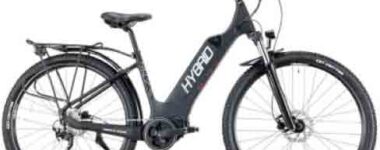Latest News
Share this post:
New Zealand… How to Stay Safe In The NZ Outdoors
New Zealand is an incredible place to explore, with untouched terrain that’s remote yet easily accessible.
What to pack
Here’s a simple list of things the Mountain Safety Council recommend you take. This list will change depending on the length walk you are going on.
-
-
-
-
- Good quality solid footwear
- Layer your clothing, but don’t wear cotton – thermals/fleece are a great idea because they stay warm when wet. A rain jacket is essential
- Warm hat and gloves
- Plenty of water
- A small survival kit
-
-
-
Changes in weather
It’s very common to see the sun one hour, and then have heavy rain and strong winds the next -the weather is always changing.
New Zealand is in the middle of a large ocean and this means our weather changes every day and the weather isn’t stable like most continental parts of Europe, Asian, America or Australia. New Zealand is a small island with most of our natural outdoor area close to the sea or mountains.
Seasons
-
-
- Spring: September – November
-
During spring, New Zealand bursts with new life. Colourful blooms, baby wildlife and ‘waterfall season’ makes this an inspiring time of year to visit.
Temperatures range from 4.5 – 18 degrees celsius (40 – 65F).
-
-
- Summer: December – February
-
New Zealand’s many beaches and lakes are perfect to cool off during the summer months. Summer activities tend to make the most of the sun, sea and sand.
Temperatures range from 21 – 32 degrees celsius (70 – 90F).
-
-
- Autumn/ Fall: March – May
-
In autumn, New Zealand enjoys some of the most settled weather of the whole year. Soak up long, sunny days and golden leaves with hiking, cycling or kayaking.
Temperatures range from 7 – 21 degrees celsius (45 – 70F).
-
-
- Winter: June – August
-
The winter months brings snow blanketing soaring mountains in certain parts of the country and clear, crisp days that awaken the senses. Hit the ski slopes, visit a winery or two or head along to one of the many winter festivals.
Temperatures range from 1.5 – 15.5 degrees celsius (35 – 60F).
Tell someone your plans
In New Zealand it’s expected you’ll tell someone what you’re doing and where you’re going, before you go. That way if something does go wrong our emergency services can help you as they’ll know where you were headed.
Tell someone your plans using whatever system works for you, this could be an email, a phone call, or a detailed SMS message, and make sure you let them know once you’re back out too. You may not have mobile phone reception on your walk or hike, so make sure you are prepared before you go.
Common methods for telling someone your plans
-
-
-
-
- Good = Text / Call / IM / Social Media Post / Note – Before you leave, no matter how far you’re going, make sure you either Text / Call / IM / Social Media Post / Leave a note. This is recommended for even the shortest of day walks. However, doing this alone can miss a lot of important information and make finding you tricky, but at least you’ve narrowed the search area down.
- Better = Text / Call / IM / Social Media Post / Note + Outdoor Intentions Form – If you’re heading out for more than a few hours fill in the form online and send to a trusted contact. It’ll step you through what information to leave. If you follow these steps should something go wrong help will be alerted at a certain point regardless of whether you’re able to alert anyone yourself.
- Best = Text / Call / IM / Social Media Post / Note + Outdoor Intentions Form + Personal Locator Beacon (PLB) – Following these steps will ensure that someone knows your plans, has all the information to hand if something goes wrong and you have an ability to call for help.
-
-
-
Know your limits
Before you go make sure you’ve selected a walk or hike that’s suitable for you and your group, based on fitness levels and time available. If you’re not sure about this, then ask a local – check in at the local Department of Conservation office (they know lots about the local area) or ask someone either at your accommodation or at a shop in town before you go.


 Collecting and Propagating Seeds
Collecting and Propagating Seeds China on a Plate: The Flavours of a Nation (with a Spotlight on Sichuan)
China on a Plate: The Flavours of a Nation (with a Spotlight on Sichuan) Kinesiology Cross Patches
Kinesiology Cross Patches Camaraderie On a Walking Tour…
Camaraderie On a Walking Tour… How E-Biking Has Transformed Biking Tours
How E-Biking Has Transformed Biking Tours








